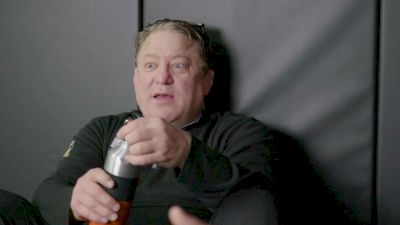Plain And Simple, End Of Story
Plain And Simple, End Of Story
Spey's first ever column. What a groundbreaking moment in sports journalism for all of us to share.
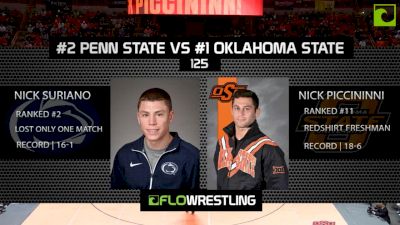
Hello and welcome to the premier edition of Plain and Simple, End of Story, my column where I explain everything there is to know about wrestling. What an epochal moment in sports journalism! How wonderful for all of us.
"But why now?" you may ask. "Why invest your time and energy into a fusty, old-fashioned medium when clearly everyone, including your own employer, has long since made the celebrated pivot to video?"
Because, you see, I am an inveterate iconoclast. And also CP is on vacation and is hardly in any position to stop me. Ha ha!
Just kidding, I have not gone rogue in our fearless leader's absence. This column, and its topic — the greatest college wrestling teams of all time — was all properly vetted through the customary channels.
But wait, wasn't that same topic already expertly covered in a FloWrestling article nary a week ago? It for sure was. Right here. However, that was the official FloWrestling Top 10. This is different. This is the 100 percent correct and irrefutable top 10, as determined by your humble correspondent. Plain and simple, end of story.
1: 1986 Iowa Hawkeyes
There was no way around picking an Iowa team to top this list. If you noticed on table Mr. Steen's constructed, eight of the top 10 adjusted NCAA scores of all time are owned by Hawkeye squads, and all of those, not coincidentally, came during Dan Gable's legendary reign as head coach.
The obvious pick would be the 1997 team, the one that set the seemingly unbreakable record of 170 team points (or 172 when adjusted for the current ruleset), but a few things nudged the 1986 team above the 1997 Hawkeyes for me (and 1983, 1992, and 1991 teams for that matter).
First, this team had more placement points than in 1997. I value placement points more than advancement or bonus points. Advancement points depend on the era — entries per weight class used to vary and they didn't always have full wrestlebacks — and bonus points depend too much on the luck of the draw. Not that I completely ignore those components, only that I value placements more.
Secondly, the 1997 Hawkeyes famously outperformed many of their seeds. So while they undoubtedly had a more impressive tournament, the more impressive team to me is the one that put together the better performance throughout the entire season, which is thus reflected in the 1986's team's higher seeds going into the tourney.
Additionally, no team in the modern era every ran away with a championship by a greater margin than the '86 Hawks. They nearly doubled the point total of the Oklahoma Sooners, that tournament's runner-up. You have to go back to 1954 to find a team that outscored the field by more than 46.4 percent.
Finally, there are the names. Brad Pernith, Greg Randall, Kevin Dresser, Jim Heffernan, Royce Alger, Marty Kistler, Rico Chiapparelli, and Duane Goldman. This was an all-world team right in the heart of Gable's run. And though it doesn't really factor into the analysis, the fact that Randall, Dresser, Heffernan, and Goldman all had successful careers as Division I head coaches doesn't hurt when we reach the tie-breaking, hair-splitting levels of the list.
Also, I like the year 1986. The Met's won a World Series and the Giants had a great regular season before winning the Super Bowl in 1987. So there you have it. Case closed, plain and simple, end of story.
2: 2001 Minnesota Golden Gophers
According to the objective list of NCAA tournament performances, the 2001 NCAA champion Minnesota Golden Gophers are #27. According to me, being the only team to every place 10 wrestlers on the podium is the second most impressive performance of all time.
Feel free to disagree, but the fact that this has happened exactly once in 91 NCAA tournaments means it is one of the hardest things for a college wrestling team to accomplish. Moreover, what could be a better definition of a team effort than All-American contributions from every member of the lineup?
Leroy Vega, Jared Lawrence, Luke Becker, Brad Pike, Owen Elzen, and Garrett Lowney all made the semis while Brett Lawrence, Chad Erikson, Jacob Volkmann, and Damion Hahn went four-for-four in the bloodround to pull of this historical feat. Well done, gentlemen.
3: 1983 Iowa Hawkeyes
We're going nearly back to back 1980s Hawkeyes at the top but that is because this was perhaps the gnarliest collection of killers an NCAA program has ever assembled. 1986 had five champs and eight All-Americans; 1983 had four champs and nine All-Americans. The four Hawkeye champs from '83 were Barry Davis, Jim Zalesky, and Ed and Lou Banach.
This team also has the distinction of supplying the 1984 Summer Olympic team with three of its men's freestyle medalists, as Barry Davis would win a silver and the Banach bros would both snag golds. Recent Hawkeye grad Randy Lewis also won a gold medal at the Los Angles Olympiad.
The 1980s were heady days for the Iowa Hawkeyes indeed.
4: 2005 Oklahoma State
My favorite thing about this Cowboy team is that besides placing five guys on top of the podium (only the fourth team to ever do so), they also had a freshman Coleman Scott placing eighth, who only went on to win a bronze medal at the London Olympic Games.
And what about those NCAA champs? Titans, all of them. Zack Esposito, Johny Hendricks, Chris Pendleton, Jake Rosholt, and Steve Mocco. Name a better quintet, I'll wait.
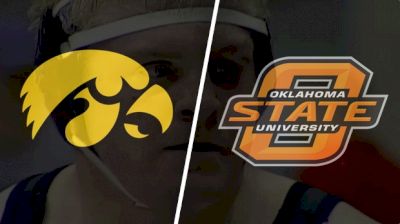
P.S. Please don't actually name a better quintet. It was a joke, a playful turn of phrase. I understand many of you will submit five wrestlers from the next team on this list as a better quintet. That is very cool and OK with me.
5: 2017 Penn State Nittany Lions
I actually wanted to put this team higher, because I got to watch this team win five finals matches in a row live (no big deal not trying to brag about it), but I decided to place them at a very respectable and I think ultimately fair #5.
How about this for a murderers row though? Zain Retherford, Jason Nolf, Vincenzo Joseph, Mark Hall, and Bo Nickal. Additionally, Nick Nevills finished fifth and Nick Suriano qualified but injury defaulted out of the tournament. Suriano's injury to Piccininni of Oklahoma state in the last dual meet of the year will go down as one of the ultimate 'what ifs' of NCAA wrestling lore. That season Suriano beat Darian Cruz, the 2017 125-pound champ, soundly in a dual meet 7-0. He lost to Thomas Gilman, third-place finisher and the undefeated favorite at the start of the tournament, 3-2. The next year Suriano went 25-1 and finish second in the NCAAs to Spencer Lee (after transferring across state lines to Rutgers).
Couple more fun facts about PSU's five champs. Combined they now have in their careers 14 top five NCAA placements, 13 finals appearances, and 10 individual titles. Only Retherford has graduated; the rest have six seasons of eligibility remaining. Fun, right?
6: 1997 Iowa Hawkeyes
Did I unfairly punish the highest-scoring NCAA wrestling team of all time, simply because I already had two Hawkeye teams in the top five, and I wanted more variety in this article? Perhaps. Even probably. Whatever, aesthetics matter, so sue me.
There's no denying that this team was nails, though. And if you presented me with your top 10 teams with this Hawkeye squad as #1 I wouldn't waste any breath disputing your decision.
The '97 squad also hands-down wins the all-name team competition. These are names that strike fear into the hearts of their competitors. Jesse Whitmer, Mike Mena, Mark Ironside, Lincoln McIlravy, Joe Williams, and Lee Fullhart, all of whom except Mena would hoist title trophies. Mr. Gable himself could scarcely have scripted a better end to his coaching career in Iowa City.
7: 1992 Iowa Hawkeyes
Look, Iowa had a lot of great teams. It was impossible not to put a bunch of them in this top 10. The '92 edition famously features two sets of twins, the Brands and Steiners, all four of whom earned All-American honors. Tom and Terry Brands won titles at 134 and 126 pounds, respectively. Troy Steiner won a title at 142 and his brother Terry took fifth at 150.
Dare I call that "TNT times two"?
No, I daren't. Too corny. Let us never utter those words again. Anywho, four other Hawks climbed the podium from yet another fearsome Gable-led band of marauders.
8: 1969 Iowa State Cyclones
Undoubtedly the nicest team ever assembled, the '69 Cyclones were the most impressive of any of the three Dan Gable wrestled on.
Besides Gable, who won a 137-pound champion by pinfall over Mary Willigan of Hofstra, the Cyclones also boasted champs in Jason Smith at 167 and Chuck Jean at 177, as well as six other All-Americans, one of whom was the great Carl Adams, who placed fifth at 152 pounds before finishing his career with two NCAA championships.
What makes this team difficult to square with the rest is how different the NCAA tournament used to be. The national championship didn't award All-American status to seventh and eighth place until 1979 and didn't have full double-elimination wrestle-backs until 1972. Before 1979, only the top six placed, and before 1972 the NCAA used the repechage system like the current Olympic and UWW tournaments use.
Nonetheless, this 1969 Cyclone squad was as salty as they come, and one that helped usher in the quote-unquote modern era of college wrestling.
9: 2015-2018 Ohio State Buckeyes
Wow, did I just blatantly cheat by putting four years of teams together just because I wanted to write about the Snyder-era of Ohio State wrestling? Yes. Yes I did.
The Buckeyes had one of the most impressive four-year runs that included just one solitary NCAA team title. Kyle Snyder is already an iconic American wrestler, and his years in Columbus will be referenced for many years to come.
2015 was a special year as that Buckeye team featured senior four-time NCAA champ senior Logan Stieber and freshman Kyle Snyder. Nathan Tomasello also won a title that year. Snyder than peeled off three straight titles from 2016-2017, with Myles Martin adding one more individual championship in 2016 (and has an opportunity to win a second this upcoming season).
I did not check to see how the 23 All-Americans the Buckeyes had during these four years compared to other teams. As I mentioned, I blatantly cheated because I wanted to see the Snyder years represented on this list. Cast all the aspersions you like, it's my list and I shan't remove them.
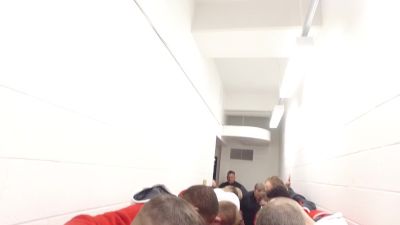
10: 1965 Iowa State & Oklahoma State
Both of these teams tied for having scored the seventh most rules-adjusted placement points of all time at the NCAA tournament. I include them both because 1) I do what I want, and 2) to make a point that there is no singular "correct" way to rank teams.
To wit: based on the scoring rules at the time, Iowa State won the championship by one point, 87 to 86. However, If the current scoring rubric were in place back in 1965, Oklahoma State would have won by the score of 137 to 136.5. So who's to say which was the better team? Besides me, who is saying it's a tie.
Incidentally, the one time a Cyclone and Cowboy met in the finals resulted in a win for Iowa State, as Tom Peckham beat Bill Harlow 5-3 at 177 pounds. Additionally, both teams would combine for five champs and 18 All-Americans. Yes, that's nine apiece. That is outstanding.
Honorable Mention: 1930s Oklahoma A&M
I have heavily discounted the earliest decades of college wrestling, which is why no team from the '20s, '30s, '40s or '50s made the top 10. Perhaps that is unfair; however, I do not believe that to be the case.
This list was purposefully weighted towards more recent teams. That is because the sport of wrestling has gotten better and more competitive as the years have ticked away. And that is a good thing! We should all hope that continues to be the case!
Back in the day, most college-aged men in the country didn't go to college, or were busy, for example, fighting a dang world war. As such, the quality of competition of college wrestling back in the day suffered. And so the best teams will necessarily have to come from eras where the talent pool was deeper, the programs were healthier, and the sport better resourced.
Nonetheless, the sheer dominance of the teams of Oklahoma A&M (later to be known as Oklahoma State University) in the 1930s deserves a shout out. In 10 years, OK A&M won eight team titles. The other two years they took second. That decade of dominance helped build the foundation upon which current Cowboy teams are constructed. The connection is inherent and sturdy.
And there you have it, the 100 percent correct and irrefutable best 10 NCAA seasons of all time! Plus an honorable mention. That's great bonus material right there!
So why two lists? What is the difference is between the Official FloWrestling Top 10 and the 100 percent correct and irrefutable list? Well, I will tell you.
First I wrote and published the 100 percent and irrefutable list. Then there were internal disagreements and passionate debate, as per the usual at FloHQ, and the 100 percent and irrefutable list was removed from our august website. Further discussion ensued, a consensus was reached, and the new, different and official top 10 list was written and published.
And then, because I took to heart the first rule they teach you in Content School, which is to never let a piece of content go to waste, it was agreed that I would slip that first list back up on the site under a different guise.
It must be emphasized that only the other list should be referred to as 'Flo's list', whereas this one is all mine. Should you take umbrage with order of my list, please hurl your calumny and invective in my direction, and not in the general direction of FloWrestling.
Those protests will do you little good, though, as previously mentioned, this list is 100 percent correct and irrefutable, but I thank you for taking an interest regardless of how you feel about it.
So that's it? This first ever edition of an era-defining sports column and it's just recycled piece of content on a subject that was already covered?
OK, fair point. Since you put it that way, here is a second piece of recycled content.
I've done it again. Breathtaking.
— Jaroslav Hasek (@SpeyWrestle) May 10, 2018
?? pic.twitter.com/SBI4YIceIE
And that is why criteria is better than overtime. Plain and simple, end of story.
Related Content
 61 kg Rnd Of 32 - Shawn Ryncarz, Mission Wrestling Club vs Zan Fugitt, Nixa High School Wrestling
61 kg Rnd Of 32 - Shawn Ryncarz, Mission Wrestling Club vs Zan Fugitt, Nixa High School WrestlingApr 26, 2024
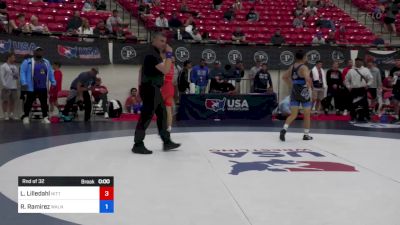 57 kg Rnd Of 32 - Luke Lilledahl, Nittany Lion Wrestling Club vs Ronnie Ramirez, Walnut High School Wrestling
57 kg Rnd Of 32 - Luke Lilledahl, Nittany Lion Wrestling Club vs Ronnie Ramirez, Walnut High School WrestlingApr 26, 2024
 57 kg Cons 32 #1 - Jake Knight, Iowa vs Nolan Wertanen, Cliff Keen Wrestling Club
57 kg Cons 32 #1 - Jake Knight, Iowa vs Nolan Wertanen, Cliff Keen Wrestling ClubApr 26, 2024
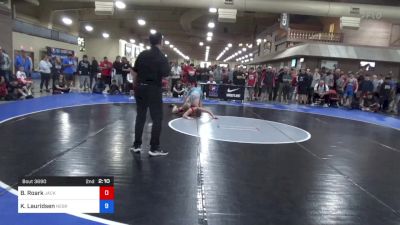 57 kg Rnd Of 32 - Brady Roark, Jackrabbit Wrestling Club vs Kael Lauridsen, Nebraska
57 kg Rnd Of 32 - Brady Roark, Jackrabbit Wrestling Club vs Kael Lauridsen, NebraskaApr 26, 2024
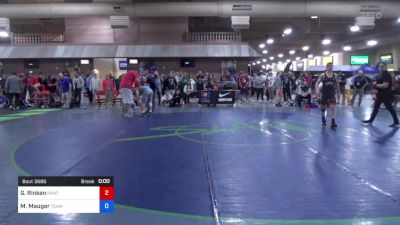 57 kg Rnd Of 32 - Garret Rinken, Panther Wrestling Club RTC vs Mack Mauger, Team Idaho Wrestling Club
57 kg Rnd Of 32 - Garret Rinken, Panther Wrestling Club RTC vs Mack Mauger, Team Idaho Wrestling ClubApr 26, 2024
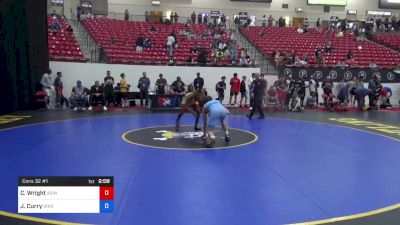 57 kg Cons 32 #1 - Caleb Wright, Ironclad Wrestling Club vs Joseph Curry, Ohio
57 kg Cons 32 #1 - Caleb Wright, Ironclad Wrestling Club vs Joseph Curry, OhioApr 26, 2024
 57 kg Cons 32 #1 - Koda Holeman, Central Coast Regional Training Center vs Kaiden Powell, Paola High School Wrestling
57 kg Cons 32 #1 - Koda Holeman, Central Coast Regional Training Center vs Kaiden Powell, Paola High School WrestlingApr 26, 2024
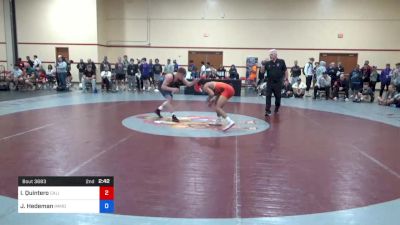 57 kg Rnd Of 32 - Isaiah Quintero, California vs Jace Hedeman, Immortal Athletics WC
57 kg Rnd Of 32 - Isaiah Quintero, California vs Jace Hedeman, Immortal Athletics WCApr 26, 2024
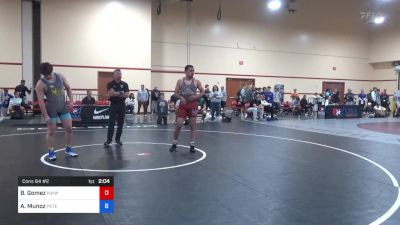 86 kg Cons 64 #2 - Benjamin Gomez, Nwwc vs Alex Munoz, Peterson Grapplers Wrestling Club
86 kg Cons 64 #2 - Benjamin Gomez, Nwwc vs Alex Munoz, Peterson Grapplers Wrestling ClubApr 26, 2024
